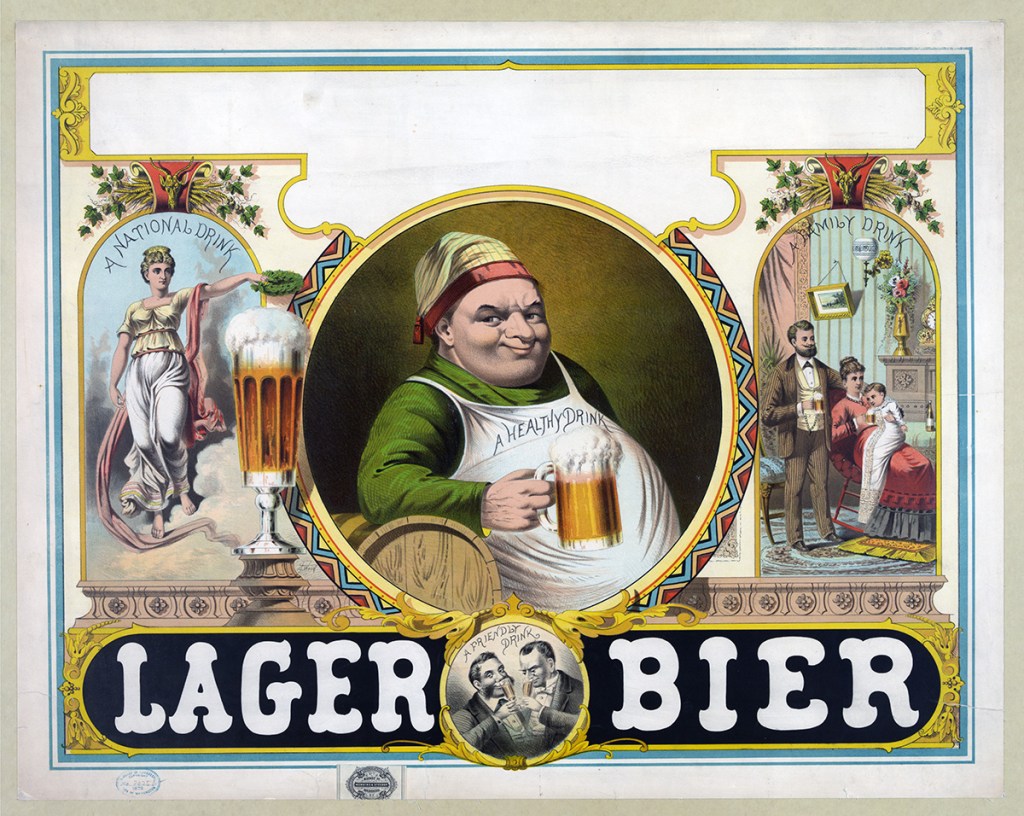New Americans, New Drinking Cultures
As immigrants moved to the Champlain Valley in the mid-to-late 19th century, they brought their own cultural customs around alcohol. Immigrants came for social and economic reasons, primarily from Scotland, Ireland, and Italy, while others crossed the Canadian border and moved south from Quebec.
Scottish and Irish immigrants moved to the Champlain Valley first to build the canal system in the mid-19th century. In 1834, an upstate New York reverend wrote of Irish immigrants in the Champlain Valley that, “They will soon have five to one against us, — Scotch and Englishmen… They are very noisy people when they drink … there is no stability in their loyalty to our government.” This coded, or not-so-coded, language belied the anti-immigrant sentiment that was rife in the Champlain Valley. In the end, prohibition laws, particularly in Vermont, unevenly targeted immigrant groups.
Image: Large group of Barre, Vermont residents originally from Bisuschio, Italy with musical instruments drinking in woods. Butlers Photo’s, Barre. Courtesy Vermont Historical Society.
Explore stories in this section:




Working the Mines in New York
In the 19th century, the New York side of Lake Champlain was home to an important iron mining industry. Large numbers of immigrants, mainly from Western Europe, moved to the New York shores to work in the mines. As in Vermont’s marble quarries, these miners often held different relationships to alcohol than earlier settlers. Alcohol was sometimes forbidden to workers living in company-owned housing.
Local temperance groups rallied against these new immigrant groups, often citing the drinking cultures of immigrants as a pretense for anti-immigrant sentiment. In 1853, at a meeting of the Westport Sons of Temperance society, the group declared, “Our own safety from the large influx of foreigners, from the great increase of business in the Iron Manufactures and probable rail road building requires the rigid use of what means we have in our power at the present time, to suppress the retail traffic in groceries and dens of wickedness.” In many cases, these temperance groups were intentionally unwelcome to immigrants.
Image: Lake Champlain from Port Henry Iron Ore Mines. Postcard PC415.16. Lake Champlain Maritime Museum Collection.

Vermont Puts Beer on Trial, Literally
When German immigrants arrived in Vermont, they brought with them their low alcohol style lager. In May of 1876, Vermont became known as the home of the trial called “The State of Vermont vs. One Keg of Lager Beer.” Although handled by an actual justice and attorneys, it was a theatrical public event that attempted to determine if lager beer was indeed intoxicating. The keg of lager at the heart of this argument was seized May 8, 1876 at a German café in Rutland operated by Frank Jackson. A number of “expert” witnesses testified as to how many glasses of lager they had consumed before becoming drunk, with one claiming that he “frequently drank from twenty to thirty glasses in one evening and felt no effect from it.” The jury decided the verdict in less than an hour: lager beer was not guilty of all charges.
Image: Lager Beer lithograph, ca. 1879. J.Z. Wood, Mensing & Stecher, lithographers. Courtesy Library of Congress.
Another story of beer in Vermont comes from Robert N. Flack was a Lake Champlain captain and Irish immigrant who purchased Burlington Brewery in the 1830s. By the fall of 1836, Flack produced “Flack’s No. 1,” a red ale that was lauded in a Burlington Free Press article and was in high demand. The brewery continued to advertise for the sale of ale and the purchase of barley, but little more is known of the operation other than one advertisement placed in 1837. Flack operated the brewery until July 6, 1839, when a fire of unknown origin decimated the building.

Italian Americans in Barre
The story of the Italian American community in Barre exemplifies the corruption and uneven enforcement that resulted from Vermont’s prohibition law. After many Italian granite carvers died young from lung disease caused by conditions working in the quarries, their widows often had no other option but to turn their homes into boarding houses and illegal bars. A firsthand account on what was occurring in Barre came from the famous anarchist Emma Goldman. She came to Barre to give a series of lectures in 1899 and was shocked to find that several private homes had been turned into saloons. She wrote in her book Living My Life that, “Many such places were thriving under the protection of the police, to whom part of the income was regularly paid.” After the Barre police would not allow her to present her final lecture, her local friend hypothesized, “You caught the Mayor and the Chief of Police in Mrs. Colletti’s kitchen, dead drunk….and you have looked into their stakes in the brothels. No wonder they consider you dangerous now and want to get you out.”
This image pictures the few granite workers over 50 working in Barre at the turn of the 20th century. Granite workers often died young of lung diseases brought on by working conditions in the quarries. Image: Barre granite workers 50 years and older, ca. 1900. Courtesy Vermont Historical Society.

